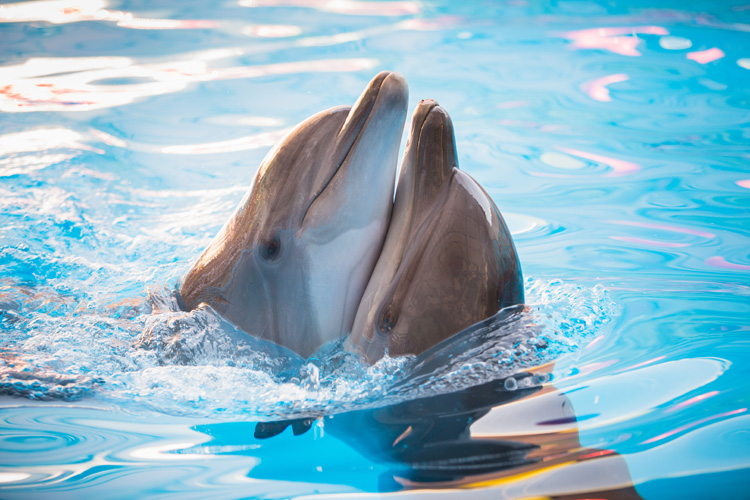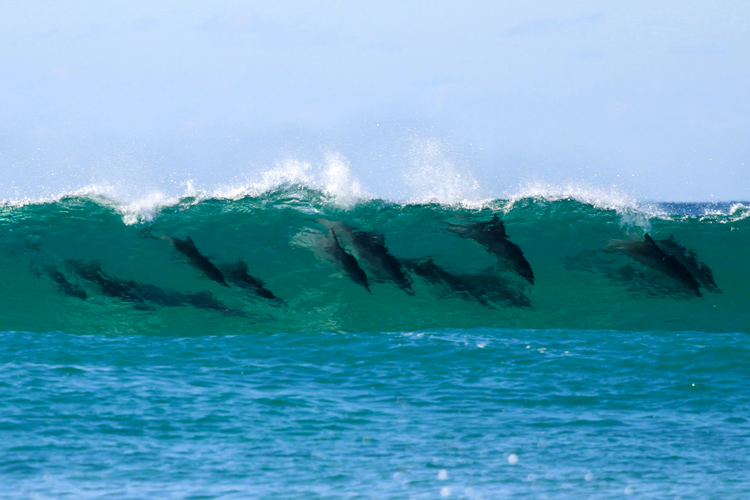They don't need surfboards or any watercraft, and they're as good as any human surfer. Here's why dolphins love to surf.
Why do dolphins like to catch and surf ocean waves? Are they doing it just for fun? Are they training their swimming skills? Are they merely showing off?
Dolphins are incredibly intelligent, social, and playful creatures. And they're great surfers, too. They are often spotted in pods riding the waves together.
They are also known for swimming in front of ships and riding the wake waves generated by recreational and fishing boats.
It's fair to say that humans are not the only living beings who appreciate surfing waves - dolphins do love surfing the world's finest breaks.
They use their smooth bodies to navigate across the unbroken parts of the waves, trimming the surf line as surfers do.
When the waves are about to break and explode, dolphins turn around and get back to the lineup for another ride. Occasionally, they even jump out of the water.
And when the surf is above average, they even drop in on their fellow human wave riders.

Dolphins Have Been Surfing for 11 Million Years
The origins of dolphins date back to 8.5-13.0 million years ago, and apparently, they've been surfing the Earth's waves for quite a long time.
Researchers from the University of Cambridge say that Ancient Greeks already documented dolphins riding the waves created by the bows of boats.
"They've been doing it for ages. They might just be having fun. They are deeply intelligent creatures, so why not just have some fun and hang out," scientists say.
If you pay close attention, you can hear them talking and whistling to each other as they're riding the unbroken rollers.
A second theory says that these aquatic mammals catch waves in order to choose a mate and make sure they find enough food as they speed toward their prey.
Some people believe they use the power of waves to optimize the swimming trajectory underwater and help to dislodge parasites from their skin.
Finally, some biologists believe that the splashing noises they make while riding the waves are a form of communication with other nearby dolphins and increasing social bonding.
Interestingly, they tend to wait for the swell to arrive before starting to swim. Dolphins seem to coordinate all the moves between them as if they were dancing to their own music.
Dolphins are fast swimmers equipped with two pectoral flippers containing four digits, a boneless dorsal fin for stability, and a tail fin for propulsion.
When they reach high speeds, dolphins create slipstreams on the side of their bodies that help newborns be carried close to their moms.
Dolphins swim at speeds of up to 25 miles per hour (49 kilometers per hour) and dive to depths of up to 985 feet (300 meters).
